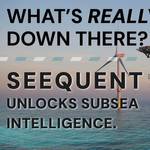Types and Applications of Subsea Vehicles
Manned undersea vehicles
The idea of subsea vehicles operated by man dates back to the 18th century, and the first submersible machine was built in 1775 by David Bushnell and his brother, Ezra and was called Turtle. Only one person could fit in this wooden machine and he could only survive underwater for 30 minutes until he ran out of air. In time, the manned underwater vehicles have evolved up to the sophisticated machineries we are familiar with today. Everybody knows the concept of a submarine, the undersea vehicle that can function for many hours underwater and can accommodate an increasing number of people.
Submarines have two functions – they can either be a part of the military’s fleet or serve non-military purposes of investigation and assessment. Nowadays, almost all navies in the world use submarines, and many of them have already used them in combats, during the World Wars. Some submersibles are able to embark a considerable amount of equipment and supplies, sometimes even more than a 500 kg weight. Like planes and other vehicles, they feature both automatic and manual control systems, life support systems and adjustable emergency-rescue devices, as well as electrical radio-navigation equipments.
Unmanned Subsea Vehicles
Unmanned subsea vehicles are also known as autonomous underwater vehicles or AUVs. The military calls them unmanned undersea vehicles or UUVs, but all these names describe the same machine – a robot that can travel underwater without requiring the presence of the human inside it to control it. There are two different types of unmanned underwater vehicles – those controlled by humans through the agency of a remote control are known as remotely operated underwater vehicles or ROVs, while those that operate without requiring human input at all are known as autonomous underwater vehicles or AUVs.
Remotely operated subsea vehicles (ROVs)
These subsea vehicles are highly maneuverable undersea robots that can be controlled by a person abroad a vessel, through a set of cables known as tether or umbilical cable. These cables play the role of transmitting to the human operator various types of information, such as images, sounds or other data. They have a power supply and the electrical power reaches the ROV through the tether. There is no other way to control these subsea vehicles, as radio signal only penetrates the surface of the water, but cannot make it any deeper than that.
Lately, new technologies for long-distance control have been invented, such as acoustic modems, which use sounds with high frequency in order to transmit the data, and deep-blue lasers, which can penetrate hundreds of meter under water; however, these technologies still need to be perfected before being applied to remotely operated subsea vehicles. In order to serve its purpose, a ROV is usually equipped with manipulators, still cameras, survey sensors, water samples, and tools that measure temperature, pressure, light penetration and water clarity. The size of the ROV varies with the purpose it serves.
The idea of a remotely operated underwater vehicle first originated with the Luppis-Whitehead Automobile in Austria in 1864; however, the first ones to ever build such a machine were the researchers in the US Navy in the ‘60’s, who used ROVs in order to retrieve objects lost on the bottom of the ocean. ROVs are still used by the military, but also in scientific and educational purposes.
Ever since 2008, the Navy replaced all manned rescue operations with the SRDRS system that uses an unmanned ROV called pressurized rescue module (PRM). These ROVs are also great at detecting and neutralizing mines, thus they are included in the compulsory equipment of the 14 United States Navy vessels named the Avenger-class mine countermeasures ships. ROVs are also used by scientists that want to explore deep-sea areas without endangering the safety of humans. The purpose is usually the study of deep-sea environments and habitats for flora and fauna. Scientific subsea vehicles focus primarily on capturing high quality images; therefore they are equipped with high-output lighting systems and quality video cameras.
Educational ROVs are created by students of all ages, from elementary class to high school. They are made of PVC and other premade materials. The purpose of the educational programs that includes manufacturing ROVs is to offer these students an incentive to explore the naval architecture and understand the basic concepts of marine engineering.
Autonomous subsea vehicles (AUVs)
The researchers at University of Washington were the first ones to create an AUV, in 1957, especially in the purpose of data gathering from Arctic regions; though there were not many publications to document their usage at the time. Since then, the design and functionality of these subsea vehicles has evolved, yet they basically function on the same principle – they have autonomous power and control themselves while accomplishing tasks they were set for; they don’t require any sort of communication with a human operator.
AUVs do not replace ROVs, but rather complement them. Within the past few years, the research and development of AUVs has increased exponentially and they have moved on from scientific research to commercial utilization. The autonomous subsea vehicles are not perfected yet, as they still encounter several technological problems. The AUV niche mainly address technologies related to autonomy, energy systems and management, navigation, sensors and processing information, 3D imaging and communication.
A great step ahead in the AUV development is the use of solar energy to power some of these machines. It is a very new technology, but the greatest of its advantages is the utilization of a theoretically inexhaustible source of energy. The drawback is that the vehicle needs to surface in order to recharge, which may prevent its use in some areas. Moreover, not only do AUVs complement other subsea vehicles, but they can also be used in groups of several machines to cooperate for data gathering.
The latest trend in the AUV development is the creation of higher optical and acoustic resolution imaging systems and the standardization of the system design so that all the advances in the niche can be shared with the community.














 December 2025
December 2025



